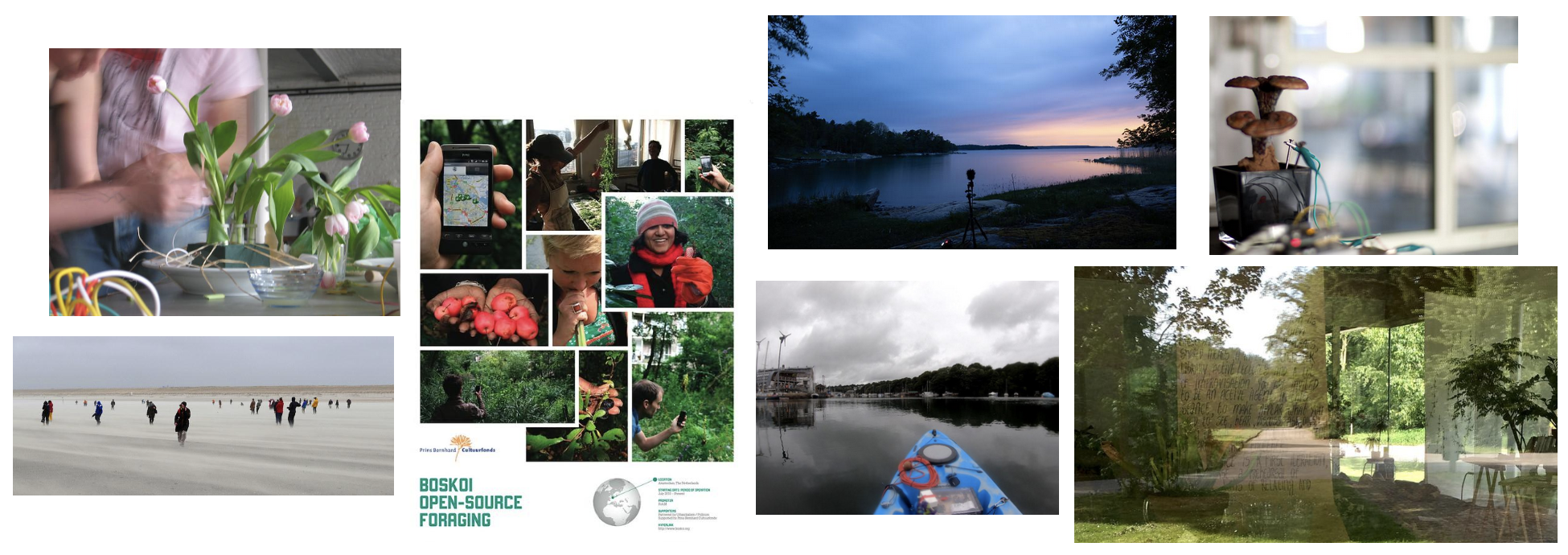Green route
Acting together with planetary and non-human beings; speculative and experimental ecologies
The ‘green’ route looks at how we relate to plants, animals, landscapes, and other non-human entities. Through guided exercises, field observation, gardening, foraging, and the design and operation of experimental (‘patabotanical’) apparatuses, the route suggests different ways to cultivate and sustain open-ended engagements with the environment. Moving between and beyond talk of conservation and sustainability, this route extends FoAM’s earlier efforts to create and hold space for ‘unholy alliances’ between people with divergent, and often contradictory values and environmental priorities. Texts and other materials speak to multiple possible ‘green’ futures, through visions of machine wilderness, experimental ecologies, and fertile symbiosis.
Some questions
- What are the best ways to stage generative conversations between people with different—and often contradictory environmental priorities? How can we pluralise our visions of possible 'green' futures?
- How can the field of human-computer interaction inform our thinking about how we relate to non-human others, e.g. fungi, bees, swamps, rocks, or dust? How can we collaborate, act alongside, or in concert with such non-human beings?
- How can we bring manifestations of the living world closer to our (mostly) human senses?
- Can a crow converse with a machine?
- What is the smallest possible swamp? What can we learn from mud?
- What would climate change taste like?
